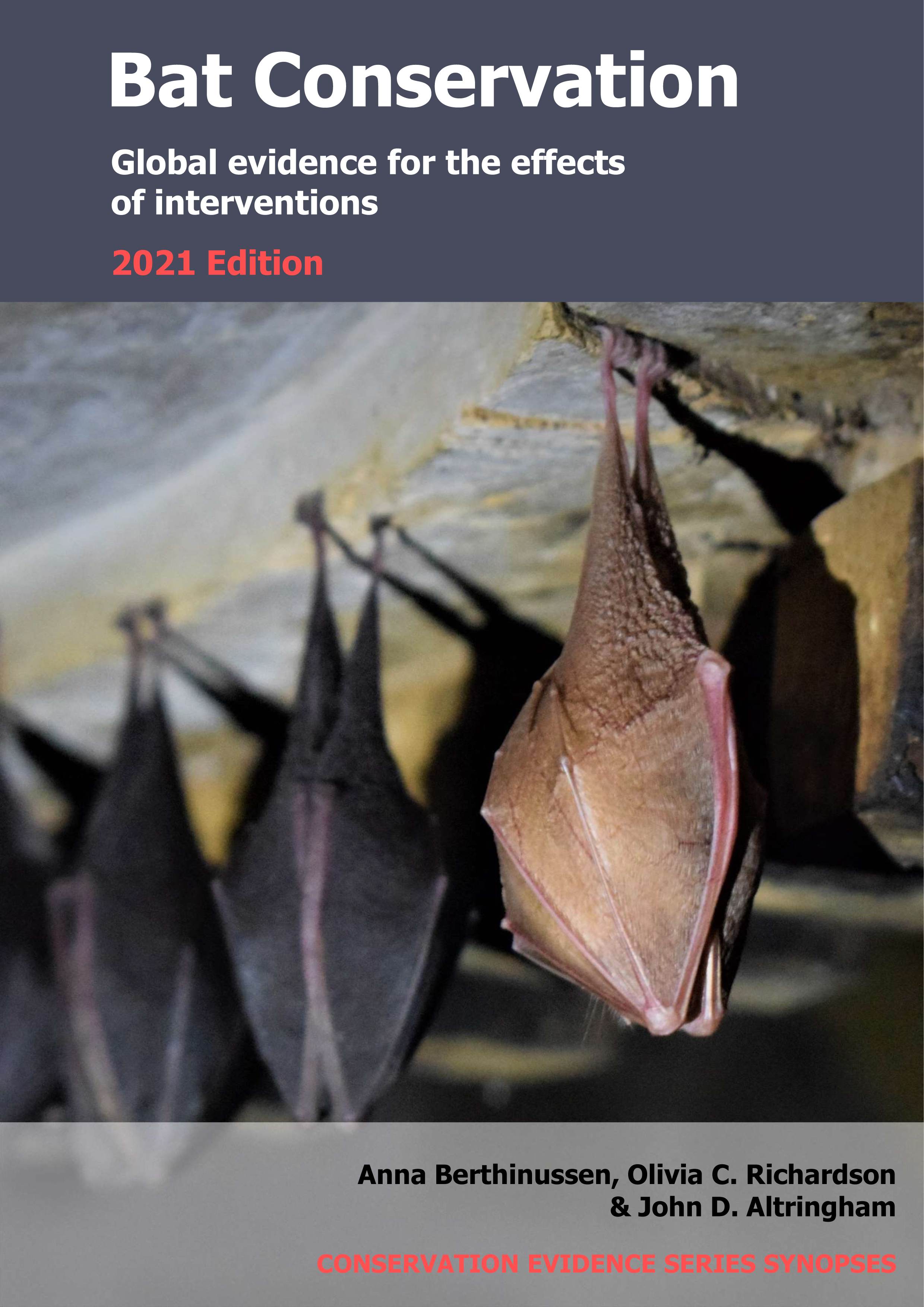Manage livestock water troughs as a drinking resource for bats
-
Overall effectiveness category Likely to be beneficial
-
Number of studies: 2
View assessment score
Hide assessment score
How is the evidence assessed?
-
Effectiveness
67% -
Certainty
45% -
Harms
0%
Study locations
Supporting evidence from individual studies
A replicated, paired sites study in 2004 of four pairs of water troughs in northern Arizona, USA (Tuttle et al 2006) found that removing livestock modifications from water troughs resulted in bats drinking from them more frequently. More bats reached the water surface at unmodified troughs than modified troughs during both single approaches (unmodified: 71% of bats; modified: 25%) and multiple approaches (unmodified: 97%; modified: 61%). Bats also approached unmodified troughs fewer times before successfully drinking than at modified troughs (unmodified: average 0.3 times; modified: 1.8 times). Three experiments were carried out at a pair of rectangular troughs (surface area 7.5 m2) and one experiment at a pair of circular troughs (surface area 4.7 m2). One trough in each pair had modifications installed with either a 3-strand barbed wire fence across the centre or boards at 100 cm intervals, the other was left unmodified. Troughs were filmed simultaneously for 1–5 nights in May–August 2004. Modifications were then switched to the unmodified trough and filming was repeated.
Study and other actions testedA paired sites study in 2008 in a semi-arid area of Texas, USA (Jackrel & Matlack 2010) found that livestock water tanks that were larger, full of water or surrounded by sparse vegetation had more bats drinking from them than smaller, half full tanks surrounded by no or dense vegetation. More bats drank from tanks that were larger (30 bats), full of water (20 bats) or surrounded by sparse vegetation (15 bats) compared to tanks that were smaller (0 bats), half full of water (0 bats) or surrounded by no vegetation (2 bats) or dense vegetation (0 bats). Four pairs of galvanized livestock water tanks (1.2, 1.8 or 3 m diameter, 0.6 m high) were deployed (spaced 80 m apart) for two nights each. Each pair tested one of four treatments: tank size (3-m diameter tank vs 1.2-m diameter tank), water level (full tank vs half full tank), sparse vegetation (one tank with salt cedar Tamarix spp. branches tied around the perimeter with some gaps, the other with no vegetation), dense vegetation (one tank with dense salt cedar branches tied around the perimeter, the other with no vegetation). Treatments were switched within each pair between the two nights. Bat activity was recorded using night-vision video cameras and infra-red lights for 160 minutes/night after sunset at each of the eight tanks in June–August 2008. Bats were not identified to species.
Study and other actions tested
Where has this evidence come from?
List of journals searched by synopsis
All the journals searched for all synopses
This Action forms part of the Action Synopsis:
Bat Conservation
Bat Conservation - Published 2021
Update 2020





)_2023.JPG)














